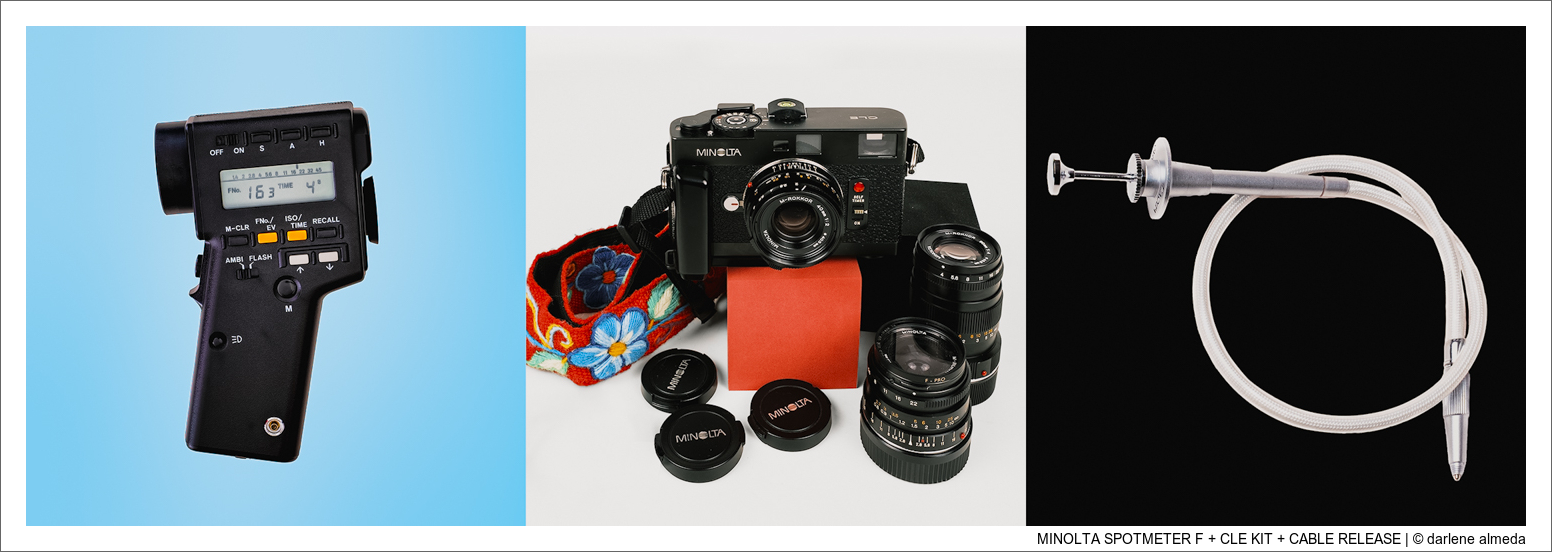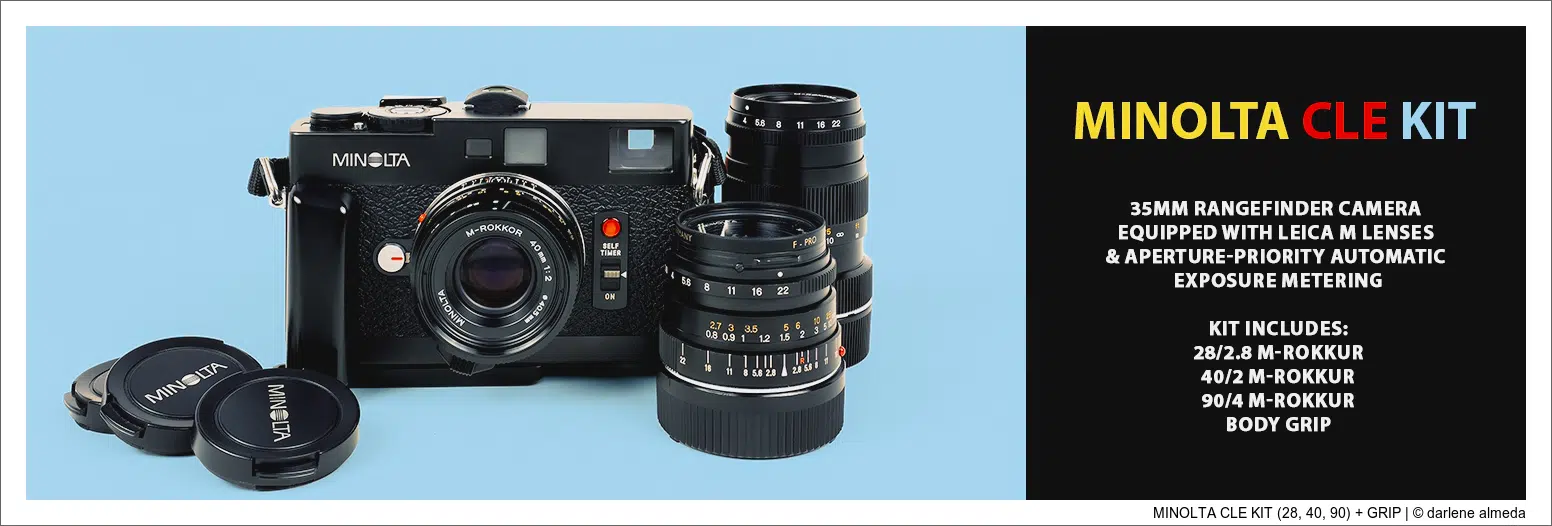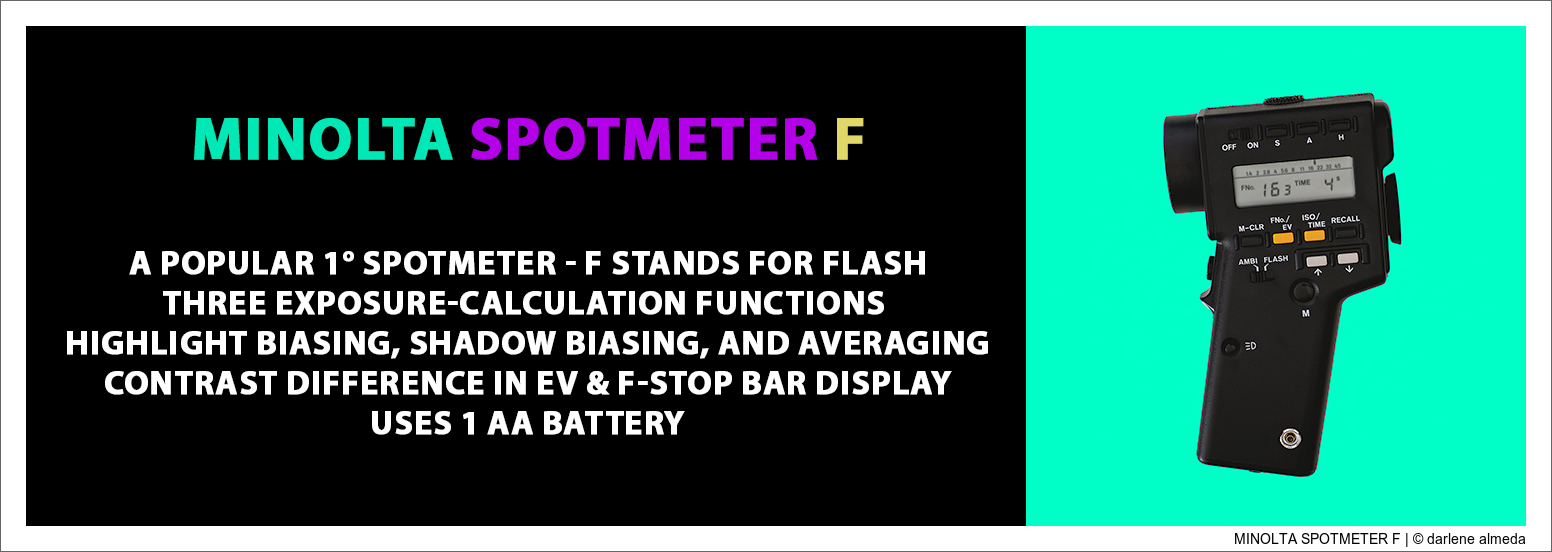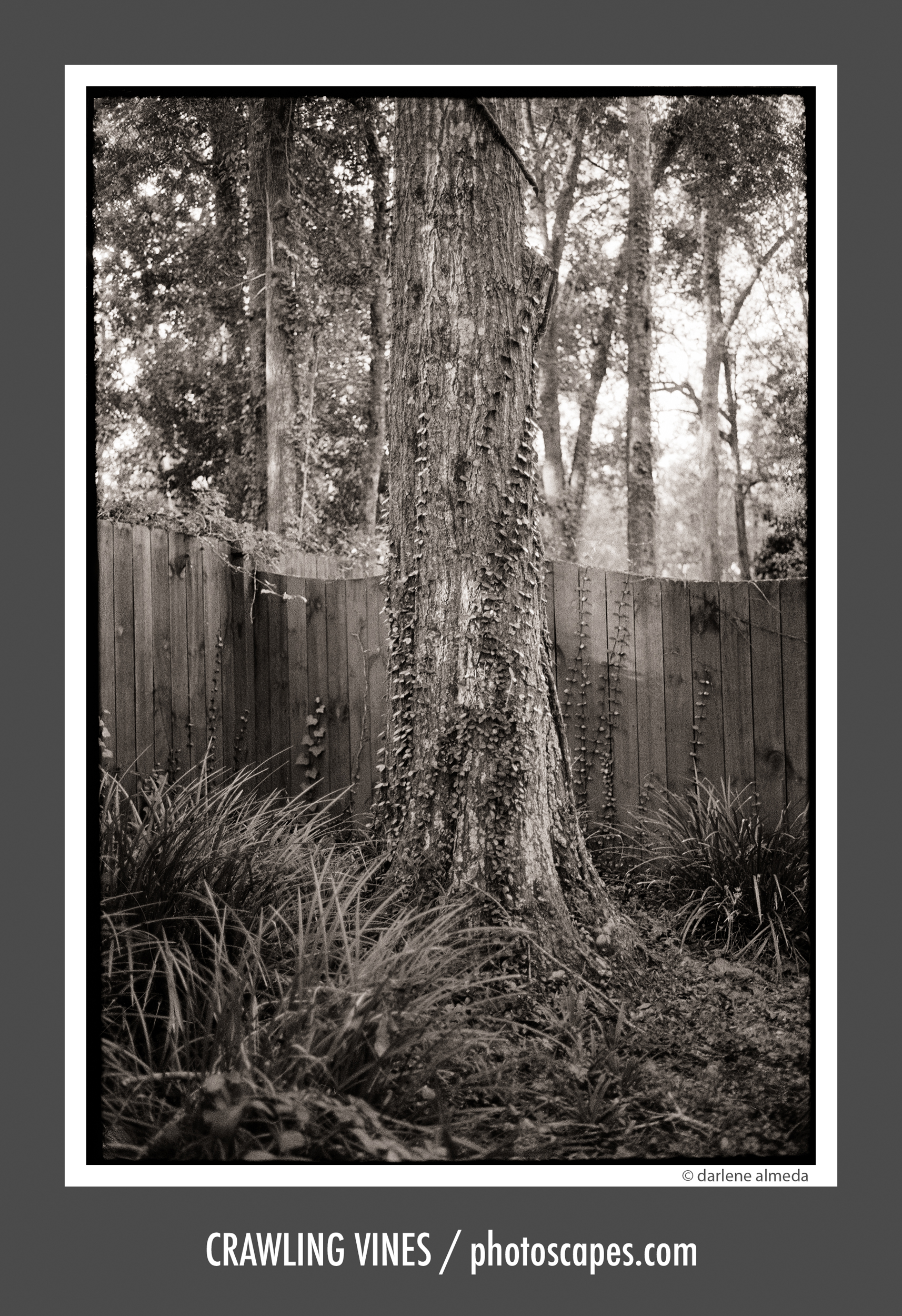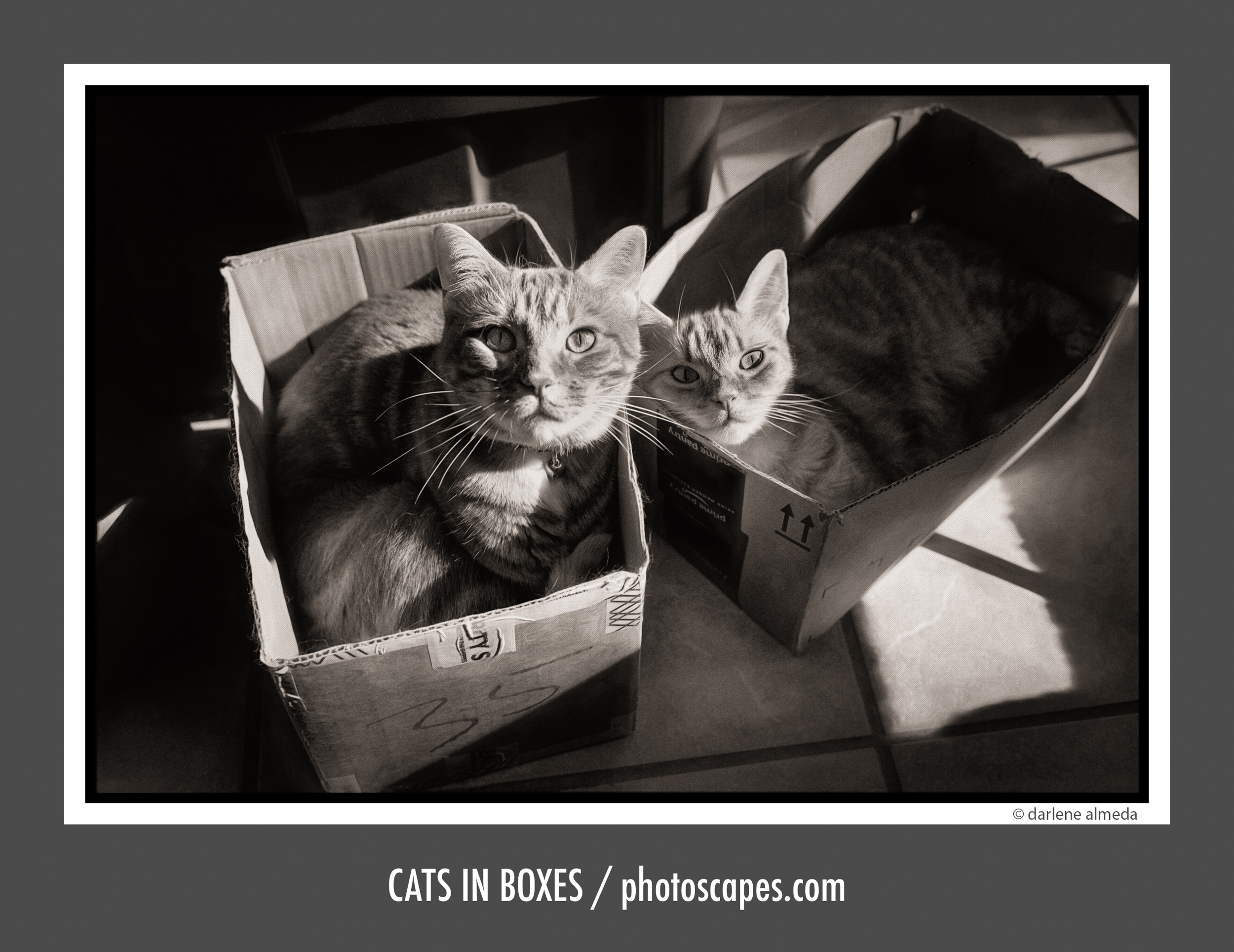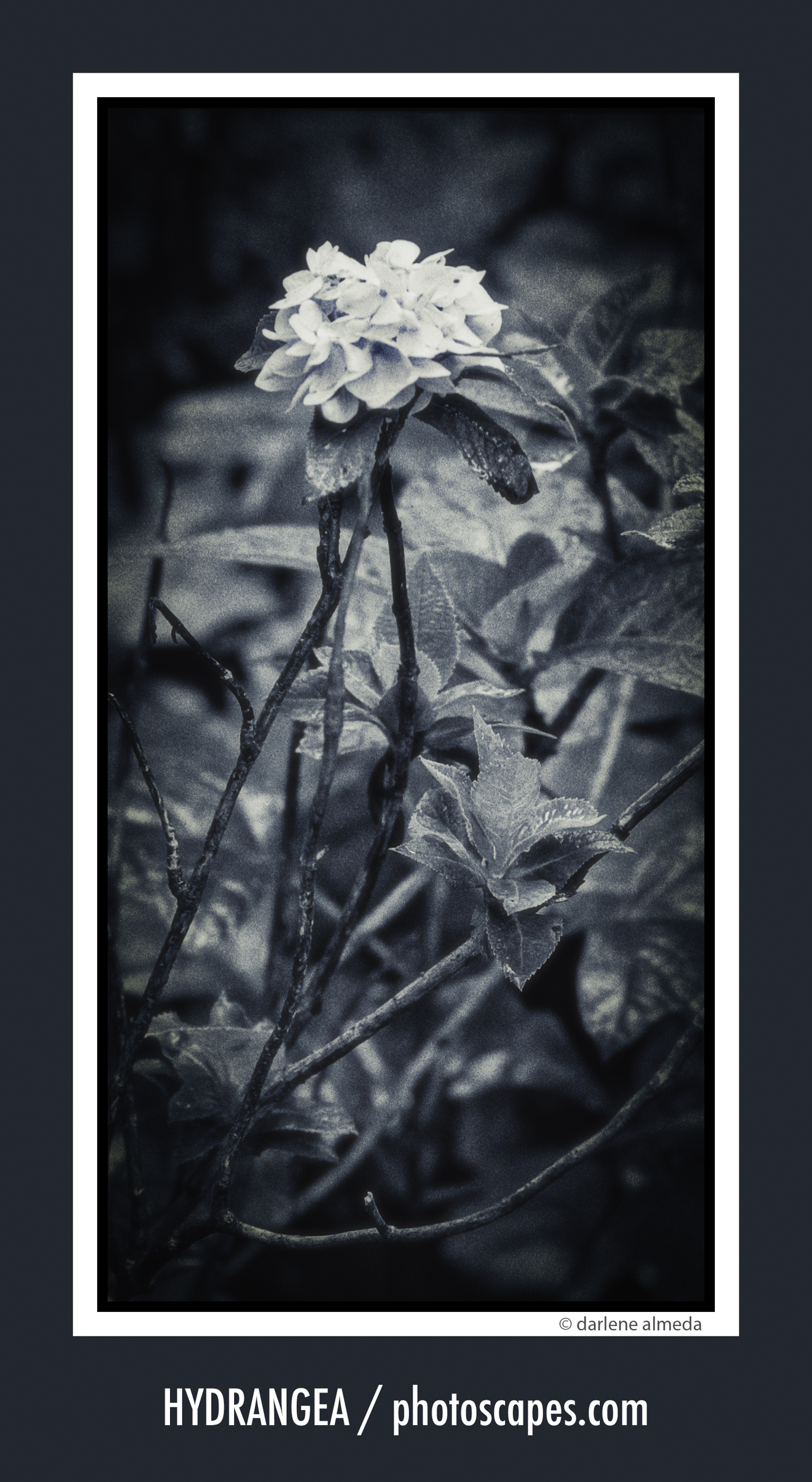MINOLTA SPOTMETER F + CLE KIT + CABLE RELEASE
MINOLTA CAMERA & GEAR
CAMERA: Minolta CLE
LENSES: M-Rokkur 28/2.8, M-Rokkur 40/2, M-Rokkur 90/4
LIGHT METERS: Minolta Spotmeter F
OTHER: Cable Release II
Minolta was a Japanese company renowned for its expertise in manufacturing cameras, optical instruments, and imaging products; it was established in 1928. It quickly rose to prominence and became a leading player in the photography industry. Minolta’s notable contributions include pioneering advancements in camera technology, especially in autofocus systems.
Among its extensive range of products, Minolta gained particular acclaim for its line of 35mm SLR cameras, which found favor among professional and amateur photographers alike. These cameras were highly regarded for their dependable performance, superior optics, and user-friendly features. In 1985, Minolta introduced the Minolta Maxxum 7000, the world’s first integrated autofocus SLR camera, solidifying its reputation as an innovative industry leader.
Minolta’s offerings extend beyond cameras to encompass diverse lenses, including the renowned “Rokkor” lens series known for its exceptional optical quality. Additionally, the company manufactured optical equipment such as binoculars and photocopiers.
In 2003, Minolta merged with Konica Corporation, forming Konica Minolta Holdings, Inc. The merger aimed to leverage the strengths of both companies in the imaging and optical sectors. Under this new entity, Konica Minolta continued producing cameras and imaging products, including digital cameras and multi-function printers.
However, the advent of digital photography and the subsequent decline of film-based cameras presented challenges for Konica Minolta in adapting to the changing market landscape. In 2006, the company withdrew from the camera business and sold its camera assets to Sony Corporation. Sony, carrying forward the Minolta legacy, incorporated Minolta’s autofocus technology into their line of digital cameras.
While Minolta is no longer active in the photography industry, its impact on camera technology and its reputation for manufacturing high-quality cameras and lenses remain enduring. Many photographers today continue to value and utilize Minolta cameras, lenses, and light meters. During the 1980s, Minolta light meters were considered the industry standard in commercial photography schools.
It is worth mentioning that Minolta’s influence extended beyond its own branded products. For instance, they played a role in enhancing the focusing capabilities of Hasselblad cameras by manufacturing the Acute-Matte Focusing Screen. Minolta’s presence in the photography industry was marked by a steadfast commitment to quality and innovation, exemplified by its highly regarded light meters and contributions to other camera systems.
MINOLTA CLE
MINOLTA CLE KIT (28, 40, 90) + GRIP
I owned a Leica M7 for a short while. It had a nice weight and feel to it in the hand, but film loading was not fun as it required removing the bottom plate. For some photographers who find their dream camera in Leica, removing the bottom plate must not be a problem, but I come from a background where I was paid to photograph, and some events that paid in the thousands of dollars for results. If the gear got in the way of my shooting rhythm or timing, the gear was removed from my toolbox.
Removing a bottom plate to reload film would not have been acceptable during special event photography unless I had multiple cameras already loaded. And I did, I always shot Hasselblads with multiple magazines preloaded, and in my opinion, medium format film gives a superior quality negative over smaller 135 film.
I like rangefinder cameras for personal shooting and wanted a similar rangefinder to the M7, but without the film-loading hassle, and I found it in the Minolta CLE. Slide film is what I want to shoot with the CLE, but I have not spent much time shooting with the camera. The images currently posted below are black & white test images from the first time I shot with the camera, and it is a nice camera to handle. After I get out and shoot, I will post better images.
The only other Minolta gear I have experience with is various light meters. Currently, I have a Spotmeter F as a backup to my Pentax Digital Spotmeter. It is not difficult to use and is built well.
MINOLTA SPOTMETER F
MINOLTA SPOTMETER F
The Minolta Spotmeter F is a popular 1° spotmeter. The F stands for flash. It will trigger your studio lights when you use a sync cord attached to a strobe light on one end and to the Spotmeter F on the other. Then look through the meter, aim it where you want a reading, and press the trigger button on the meter. Your lights will go off, and you will have a 1° reading from where the light was measured.
A similar model, the Minolta Spotmeter, does not have the flash reading option. I acquired mine as a backup to my Pentax Digital Spotmeter. The only problem is that it does not get used very often, and I decided to leave it in my Cambo Wide (my 6×12 pano camera) gear bag so it gets used more often. It is an excellent meter for averaging light, and comfortable in my smaller hands. Here is a video: Minolta Spot Meter F by Carl Bozza.
MINOLTA CABLE RELEASE II
MINOLTA CABLE RELEASE II
I have always appreciated a nicely weighted cable release. Ebony Camera made a nice one, but it was not a locking cable, which I prefer. While looking for another cable after losing the cap on my last Ebony cable, I saw an auction for the Minolta Cable Release II and took a chance on a used one. I liked it so much that I would look periodically for a reasonably priced one again, as I tend to misplace cables. Then, after I purchased another, a dealer had a few new in boxes, and I offered him a fair price, and he took it. A beautiful cable release, I recommend it if you can find one.

